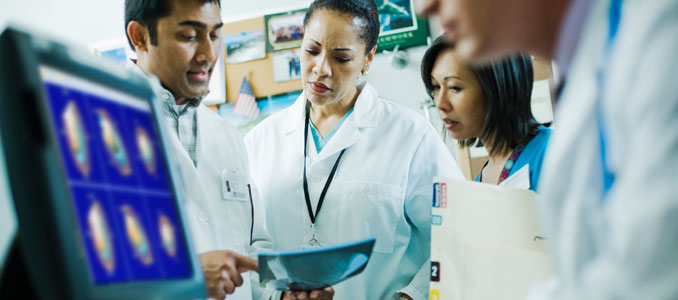Testosterone Production and Regulation
It may be surprising to find out that testosterone is made from cholesterol in a multi-step process in the body. Most typically known as the “male sex hormone,” testosterone is crucial for proper physical and mental health. When people are asked where is testosterone produced, most would automatically say in the testes. While that is primarily true for men, that is not where a woman’s production of this essential chemical messenger takes place.
Yes, women also make testosterone in their bodies – more specifically in the ovaries. Both sexes also produce a small amount in the adrenal glands.
Regulation of testosterone in men is by both luteinizing hormone and follicle stimulating hormone. The hypothalamus and pituitary gland are both crucial to adequate supplies of testosterone. When testosterone levels are below normal, the hypothalamus releases gonadotropin-releasing hormone that stimulates the pituitary gland to release LH and FSH into the bloodstream that provide the signals needed for the testes to synthesize the production of testosterone. FSH helps to stimulate the production and maturation of sperm cells while the Leydig cells convert cholesterol in the blood into testosterone.
Testosterone regulation in women also occurs when luteinizing hormone signals hormone production, development of the ova, ovulation, as well as stimulating progesterone and estradiol (estrogen) secretion. Follicle stimulating hormone stimulates ovarian follicle growth and the development of ova (egg cells).
Testosterone Production in Men
Below are answers to questions frequently asked about testosterone production in men:
Where is testosterone produced in males?
Testosterone production takes place in the testes by the Leydig cells, with a small part in the adrenal glands and the skin.
How can I increase my testosterone production?
- If you are overweight – lose some of that excess fat through exercise and diet
- Increase zinc and vitamin D levels if necessary
- Reduce stress
- Get 7 to 9 hours of sleep each night
- Consume healthy fats each day (coconut and olive oils, avocado)
- Reduce or completely eliminate sugar intake
How does low testosterone production occur?
Males automatically begin to see a decline in testosterone production around the age of thirty, and this continues at a rate of about 1 percent each year thereafter. Although most men will not notice any change for years of even decades, those who do will find that energy, libido, and metabolism all begin to suffer.
Testosterone Production in Women
Here are answers to some of the most frequently asked questions about testosterone production in women:
Where is testosterone produced in females?
Testosterone is primarily produced by the thecal cells in the ovaries, and in small part, the adrenal glands. The placenta and even the skin can also produce a little testosterone.
- What causes a decline in female testosterone production?
- Surgical removal of the ovaries (oophorectomy)
Menopause signals a decline in the hormones secreted by the ovaries:
- Testosterone
- Estrogen
- Progesterone
What are the risks of low testosterone in women?
Osteoporosis, dementia, and heart disease are all possible issues that could arise if testosterone levels drop too low in women, as well as men. Due to possible weight gain, obesity and diabetes are all concerns.
All men and women need to be concerned about Low T, and can contact National HRT to speak with a medical advisor about the different ways of increasing testosterone production.
- Wikipedia
- Regulation of testosterone production in Leydig cells from fetal mice under dynamic conditions: effect of human chorionic gonadotrophin and 8-bromo-cyclic AMP. Pointis G, Latreille MT.J Endocrinol. 1985 Dec;107(3):409-14.
- https://onlinelibrary.wiley.com
- andrologysociety.org
- The Regulation of the Male Hypothalamic-Pituitary-Gonadal Axis and Testosterone Production by Adipokines By Alexander O. Shpakov, Julian R. Ryzhov, Andrey A. Bakhtyukov, and Kira V. Derkach November 5th, 2018
- Endocrine Regulation of Male Fertility by the Skeleton Franck Oury Open ArchivePublished: February 17
- Down-Regulation Models and Modeling of Testosterone Production Induced by Recombinant Human Choriogonadotropin Jean-Michel Gries, Alain Munafo, Herve C. Porchet and Davide VerottaJournal of Pharmacology and Experimental Therapeutics April 1999, 289 (1) 371-377;



